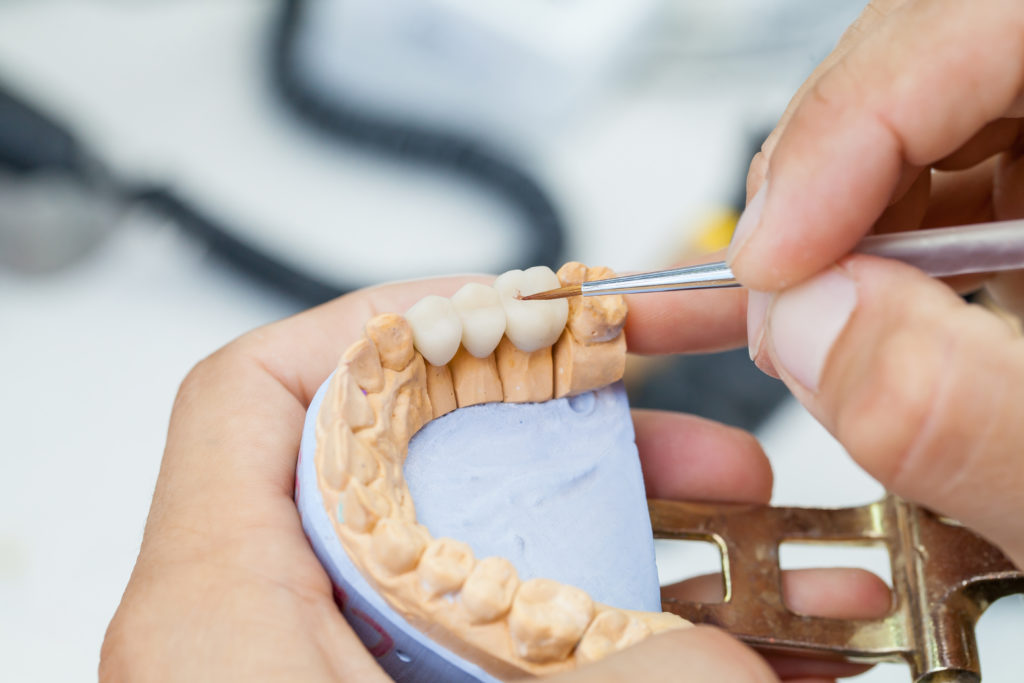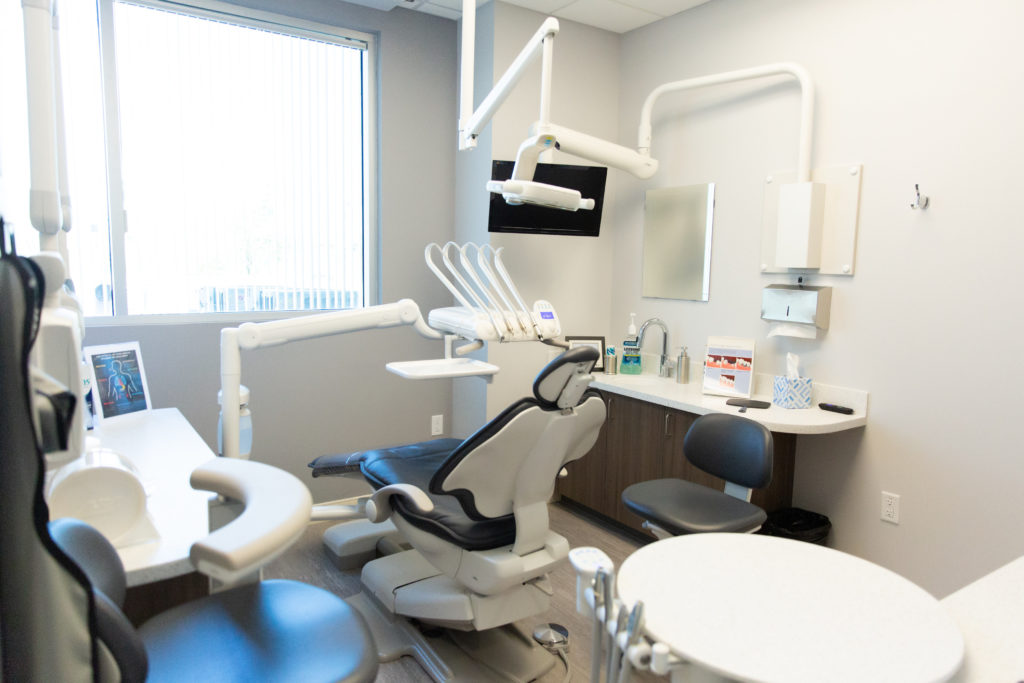You know that general dentistry keeps your mouth healthy, but prosthodontic dentistry performs more involved operations to restore missing or damaged teeth. What is restorative dentistry, and when would you require it for your oral needs?
What Is Restorative Dentistry
Any dental operation that repairs or replaces a tooth is called restorative dentistry. Root canals, cavity fillings, and dental implants are beneficial therapies. Restorative dentistry can have two objectives: restoring the teeth’s function and appearance. Sometimes, it’s either one or the other, and other times, it’s both.
Restorative dentistry aims to restore a healthy, dazzling smile while averting further oral health issues. It repairs damaged teeth to their original function and replaces missing teeth with artificial restorations.
Dentists who practice restorative dentistry see patients of all ages, young and elderly. Profitable dental operations are primarily needed in adults and the elderly to restore their biting.
Advanced restorative dentistry uses minimally invasive techniques to address various issues, such as missing or broken teeth, deteriorated fillings, shattered or fractured teeth, and many more. Please keep reading for a deeper grasp of restorative dentistry and related procedures.
A well-liked area of dentistry called restorative care aims to improve chewing and oral health. It repairs teeth by replacing any that are broken, missing, or decaying. This lessens discomfort and decreases the likelihood of developing oral issues later on.
The materials selected for recreating, mending, and restoring the original tooth structure are among the most crucial elements of minimally invasive restorative dentistry. In contemporary dentistry, aesthetics is becoming increasingly critical. Some of the goals of restorative dentistry include using the appropriate procedures to maintain the tooth substance and surrounding structures, using dental materials that increase biocompatibility, and giving maximum stability.
Dental materials that are often utilized in restorative dentistry include:
Amalgam alloys.
Metals.
Ceramics.
Polymers.
Composites.
Denture base resins, and many more.
How a restorative dentist can maintain a beautiful smile
The individual repair of teeth using amalgam, artificial porcelain-like materials, resins, or inlays is referred to as restorative dentistry. Restorative dentistry, in a nutshell, involves restoring the mouth and teeth to a functional and aesthetically acceptable condition.
As with other dental operations and specializations, restorative dentistry aims to keep your natural teeth for a lifetime of excellent health and beautiful smiles. It also entails replacing healthy teeth when they have suffered too much damage to be saved and closing the gaps caused by missing teeth. When teeth are lost, a restorative dentist will accomplish this by placing a dental implant with a bridge or dentures, all of which help maintain oral health.
Because fewer teeth remain to carry out chewing tasks and because they give support when teeth are near to one another, much like the stones in an arched bridge, the gaps left by missing teeth stress the teeth that are still there. By filling up the gaps formed by missing teeth, you can avoid cavities spreading to the neighboring teeth and teeth falling out due to a lack of support.
What distinguishes aesthetic dentistry from restorative dentistry?
Restorative dentistry enhances dental health and functionality, while cosmetic dentistry makes a smile seem better.
Specific dental treatments provide functional and aesthetic benefits (aesthetic restorative dentistry). For instance, a dental crown can improve your smile’s uniformity while restoring your ability to chew.
Making the Best Rehabilitative Decision
You have alternatives if you’re unhappy with how your mouth, teeth, and gums feel and appear. Modern dentistry presents a wide range of options, which your dentist may describe and carry out for a better appearance and feel. These options can be classified as either direct or indirect restoration.
To do direct tooth restoration, you can have a filling in a cavity as soon as possible. The dentist’s filling material will depend on the location of the damaged tooth. The patient may determine the filling that they prefer. If the treatments are straightforward and don’t require many appointments, a dentist can finish the direct restoration in a single office visit.
A patient who needs indirect tooth restoration may need to undergo many operations over several follow-up visits before the repair is complete. Dental prostheses, such as bridges, crowns, veneers, inlays, and dentures, are created at a dental lab and are used in indirect dental repair. For long-lasting results, the dentist uses a bonding paste to permanently attach the prosthesis to the patient’s mouth.
What Restorative Option Suits You Best?
Restorative dentistry may be an option for severe tooth decay or missing teeth. However, by maintaining regular dental checkups and practicing proper oral hygiene, you can prevent the need for restoration work.
If you are considering or have been advised to consider restorative dentistry, talk to your dentist to learn which is best for you. You could need either one, both, or neither.

Procedures in Restorative Dentistry
They are filling a cavity. By far, the most frequent restorative dental operation is this one. Cavities are caused by germs penetrating a tooth’s enamel, the hard outer covering, and must be filled to save the delicate pulp inside. The dentist will pull out the decayed area of the tooth during a cavity-filling operation and then replace the hole with composite material that matches the shade of your tooth. The tooth won’t become more infected by germs using this filling.
Root canal: When a cavity penetrates a tooth deeply enough to expose the fragile pulp within, a root canal operation may be necessary. Following tooth damage, you may occasionally require a root canal. Usually, a tooth needs a root canal because the pulp within is diseased. The dentist will remove the soft pulp from the tooth’s interior and the root canal during a root canal operation, rinse out the infection and fill the inside with composite material similar to that used for cavity fillings. The tooth is preserved after filling the interior since it can no longer become infected.
Crown
A crown (otherwise known as a cap) can strengthen a tooth that was broken or cracked due to severe decay or other damage. The top of the tooth is removed during the crown insertion process, and the crown is then affixed to the top. The original root of your tooth is preserved, and the height operates and looks just like your natural tooth.
Dental implant
A dental implant can supplant a lost tooth or a tooth that needs to be pulled because of severe decay or destruction. An entire prosthetic tooth and the root system are dental implants. Titanium, a biocompatible metal that links strongly with the jaw bone, is used to make the implant root. A crown is secured to the top of the heart after it has been surgically implanted in the jaw. Since the whole implant has a natural appearance and feel, it is regarded as the most acceptable alternative for replacing a missing tooth. Additionally, dental implants can serve as anchors for bridges and dentures.
Bridge
A dental bridge is a prosthetic tooth positioned between two crowns. It may occasionally consist of a row of several teeth. Crowns affixed to the teeth on each side of the bridge or dental implants hold the bridge in place. The bridge has no roots and rests on top of the gums.
Dentures
Dentures are a substitute choice if you don’t have enough healthy teeth in your mouth to operate normally. They often include an entire arch of teeth. Suction or adhesives can be used to secure removable dentures to the gums. Sometimes called implant-supported dentures, a few dental implants connect snap-on dentures to the mouth.
Who should consider restorative dentistry?
Being unhappy or depressed is linked to having damaged or missing teeth. The emotional toll increases as more teeth are lost or damaged. In one research, persons with six or more teeth extracted suffered from despair and anxiety. An imperfect grin can lead to:
Low self-esteem
Lack of confidence
Stress (especially over public eating, drinking, or speaking)
Challenges in moving forward in work
Depression-related emotions
Social exclusion
Restorative dentistry advantages
Dental restoration techniques are among the most often carried out by dentists since they offer several advantages.
Restore performance. The main advantage of restorative treatments is that your teeth function normally again. Your teeth are in good shape, so you can quickly eat and speak.
Get rid of the pain. You have undoubtedly felt excruciating agony due to having a deep cavity or a tooth that needs a root canal. Restorative therapies address that discomfort by fixing the issue or eliminating the infection.
Enhance appearance: Your teeth can appear better with restorative operations, allowing you to smile more confidently.
Avert more dental problems. When a dental issue is addressed immediately, it might avoid worsening or leading to more dental problems.
If a cavity is treated as soon as your dentist sees it, it might avoid needing a root canal. However, too much time spent ignoring a hole might cause it to become irreparable, necessitating tooth extraction and replacement.
Preserve the density of the jawbone. Your jaw’s bone density is maintained when a dental implant is used to replace a lost tooth. The bone that formerly supported it in place begins to deteriorate and finally dissolves when a tooth is lost. After that, a bone graft treatment will be necessary to replace it with an implant. Replacing a lost or non-viable tooth as soon as possible is essential to prevent bone loss.
What dangers may result from restorative dental care?
Sensitivity or general pain is the most frequent danger after a restorative dental operation. Rarely can you contract an infection or develop an allergy to the metals being utilized.
Very little danger exists with dental restorations. However, crowns, for instance, might chip or fall loose. Deep cavities or putting off filling them may need root canal therapy or tooth extraction. If you have a dental issue, contact a dentist soon.
How long does it take to recuperate from a restorative dental procedure?
It relies on many variables, such as the kind of surgery and the number of teeth that require care. For instance, a patient can instantly get back to their routine after having one hole filled. However, a person with four dental implants could need a few days to heal. Your dentist can explain what recovery time to anticipate in your circumstance.
When should I schedule a dental appointment?
If you have decaying, damaged, or missing teeth, prepare an appointment with a dentist. They can help you regain your smile’s health, functionality, and attractiveness.
Additionally, it would help if you regularly visited the dentist for cleanings and checkups. In between appointments, make sure you maintain appropriate dental hygiene at home.
If you have a dental repair that tastes terrible or feels “wrong,” call your dentist immediately for further information.

Contact Choules Family Dentistry for your dental needs.
Restorative dentistry fixes damaged teeth and enhances oral function and general health. It might not be very comforting to have a dental operation, especially if you’ve never had one. But the sooner you have a tooth condition fixed, the less likely you’ll later experience more issues. Long-term, this may save you a ton of time and anxiety.







